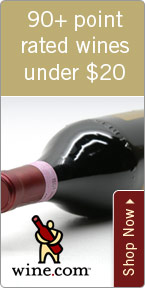Building Bridges For People’s Palates

Wednesday - January 11, 2012
| Share
 Del.icio.us
Del.icio.us
|
Bridges are built to transport people or things from one place to another because of inaccessibility or for convenience. There are certain wines that build bridges for people’s palates as well. They can be from one varietal to another, or even from one world to another.
Many wine drinkers have a favorite type or style of wine from which they very seldom venture. Yet there are those in the wine world who would like to get them to try something new.
Let’s take Cabernet Sauvignon, for instance. Cabernet is the most popular red wine in the United States. There are some producers who specifically style, or dare I say build, their Merlot to taste and feel a little more like Cabernet. They can make it a bit darker, extract a bit more tannin out of the Merlot grapes and even blend some Cabernet into the wine and still call it Merlot. This results in a chunkier, thicker, heavier wine more akin to Cabernet than the smooth, plush and middling Merlot. The benefits to the producer are obvious. They just took a piece of the Cabernet “pie” and put it into their Merlot, creating another customer and broadening their market share.
Some wines are made in a style that straddles the New and Old Worlds. New World wines tend to be more fruit forward, are generally more influenced by the use of new oak and generally higher in alcohol. Old World wines are more restrained, exhibit more earthy qualities and generally have higher acid levels.

|
But in both worlds, there are producers who reach out toward the opposite spectrum. Consider Chateau Soleil, which is from Saint Emilion in Bordeaux. The last time I tasted the 2005 vintage (January 2011) it was hedonistically endowed with gobs of ripe fruit more akin to California than Bordeaux. It also exhibited a thick texture that spoke to its 14.5 percent-plus alcohol level, again something you more often see in Napa Valley than Puisseguin, Saint Emilion. Obviously this wine is made in a style that could bridge the palate gap of a New World Merlot lover to Bordeaux.
Again, the marketing advantages are obvious for producers of wine such as these. But what happens when you get on a bridge and find yourself somewhere you don’t want to be? What if this person ends up not liking Bordeaux, Cabernet or whatever it is they thought they liked so much the first time they tried it? They go back where they came from.
I am seeing more wines trying to reach out across spectrums to entice new drinkers to become fans. But in most cases, the wine ends up being nowhere. It cannot claim a specific identity or root itself in anything traditional. It is by definition non-traditional. I find that when producers try too hard to be something that they are not, they lose their own identity. They become bridges to nowhere.
Some Bridges: 2009 Casa Lapostolle Cuvee Alexandre Cabernet Sauvignon ($26) Tasting this wine shows the terrific potential that Chile has. It has all the richness and thickness of a Napa Valley Cabernet Sauvignon with a sleek and polished texture. This is quite impressive. 2010 Veramonte Sauvignon Blanc ($12) Sweet-smelling guava and pomelo abound in this wine. It is ultra expressive and a fabulous bargain in the world of Sauvignon Blanc.
Roberto Viernes is a master sommelier. E-mail .(JavaScript must be enabled to view this email address)E-mail this story | Print this page | Comments (0) | Archive | RSS Comments (0) |
Most Recent Comment(s):












